Permeability Mapping of Glacial Deposits:
Demystifying the Conventional Overreliance
on Grain Size and Understanding
Ground Water Flow
Estimating permeabilities and ground water flow based on grain size alone may be the single largest mistake in our industry.
Too often grain size or permeability is the sole factor for trying to understand ground water movement and contaminant migration. And more often than not, boring logs and cross sections simply depict aquifers and aquitard formations when in reality, multiple factors are playing the role in ground water flow.
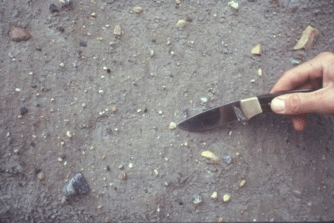 Understanding permeability is at the core of all groundwater projects. There are many great tools and techniques for determining permeability however uncertainty prevails when we over rely on grain size alone to characterize the hydrogeologic system.
Understanding permeability is at the core of all groundwater projects. There are many great tools and techniques for determining permeability however uncertainty prevails when we over rely on grain size alone to characterize the hydrogeologic system.
During this webinar, we are going to apply the previous webinar sessions about depositional environments and post-depositional weathering to basic strategies for understanding geologic context for permeability and ground water movement - and avoid common mistakes that fail to characterize the hydrogeology.
We will validate the principles from Environmental Sequence Stratigraphy and add the critical components applied to characterizing the hydrogeology of glacial deposits. When you're finished with this webinar series, you can begin taking the mystery out of the subsurface ® at your sites.
Apply the webinar principles to:
- Discovering what controls the distribution of formation permeability
- Clarifying the difference between permeability and preferential pathway
- Ensuring monitoring wells are installed in the same unit
- Preparing reliable potentiometric surface maps
- Identifying the downgradient monitoring unit
- Considering the geology when designing a remediation system
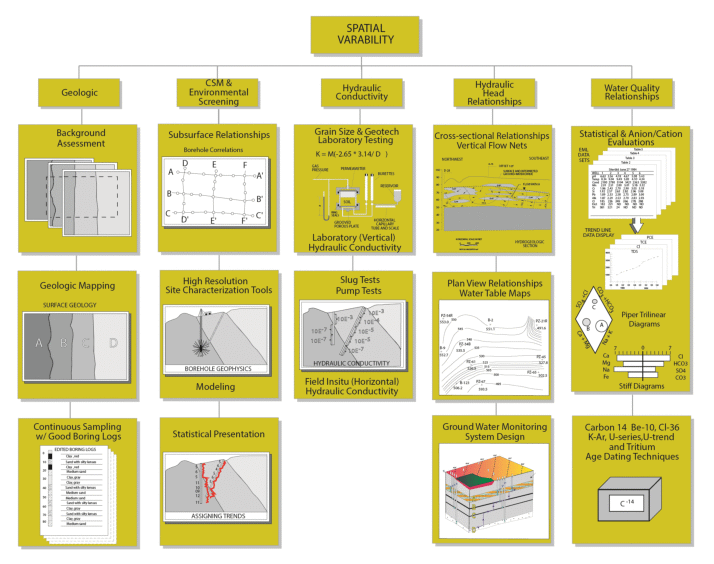
Regardless of the soil classification system you use, conventional correlation of units defined by grain-size or soil classification alone to permeability mapping may be the most common error in our industry.
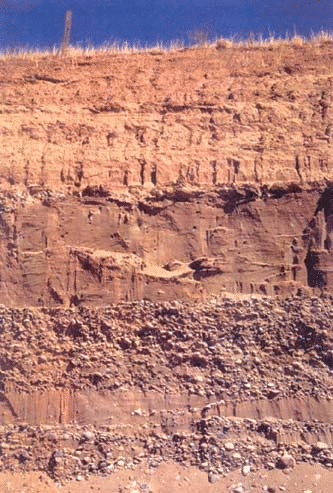 What factors control ground water movement besides grain size?
What factors control ground water movement besides grain size?
Clayey sediments may seem inherently like an aquitard, but ground water and contaminants are capable of moving laterally at high rates through fine-grained sediments under some circumstances. This webinar series will clarify this circumstance.
Sandy sediments are not always the preferential pathway or appropriate ground water monitoring units. Buried sand and gravel may or may not be preferential pathways for lateral ground water or contaminant movement. This webinar series will clarify this circumstance too.
What concepts are used when evaluating permeability?
Many lab and field analysis methods are proven successful (Hazen, 1892; Kozeny, 1927 and Carmen, 1956; Terzagi and Peck, 1964; Kenney et al., 1984; Alyamani and Sen, 1993) for predicting permeability from grain size distribution parameters using empirical equations. Despite the success for assigning a reasonably-reliable estimate of permeability to sandy soils, these methods are can be mis-used during hydrogeologic projects.
See what others are saying...
"The (9-hour Hydrogeology of Glacial Deposits) online course offers a whole new way of understanding and evaluating till deposits, based on their depositional environments. It's refreshing to see the recent progress in this field."
- Lance Kazzi, LEP, Principal Geologist, Arcadis U.S., Inc.
"The training webinars are of high quality. They were easy to use... We projected our webinars to a large screen TV mounted on the wall in our conference room. We had good clarity for sound and picture...
The content was also appropriate. Personally, I liked the overall message that high quality soil boring logs are essential to better understanding of site characterizations. How can we adequately assess the nature & extent of environmental impact (and the selected remedial actions) without adequate site characterizations."
- Mark Nichter, US Army Corp of Engineers
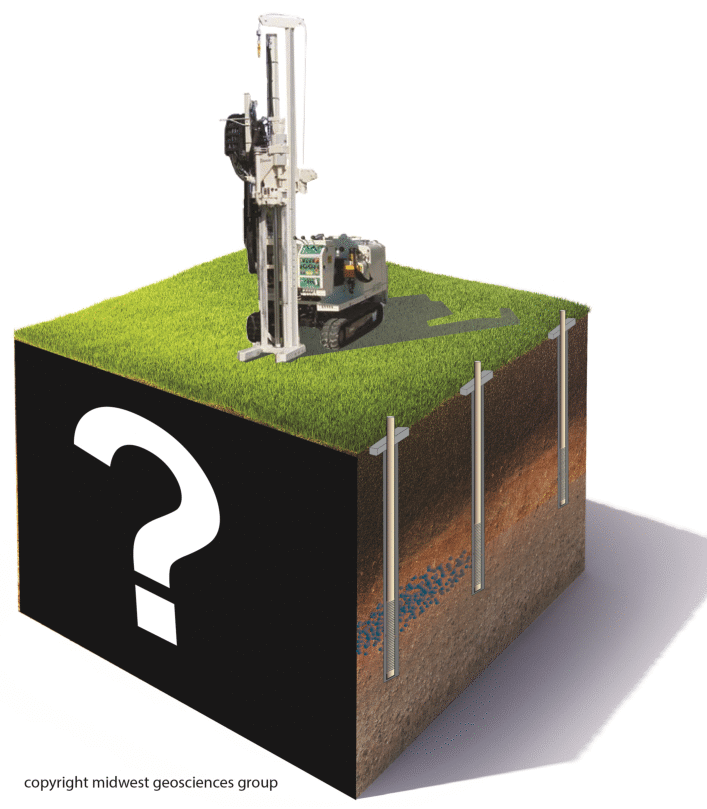
Instructors Bio
Dan Kelleher, PG, CIPM
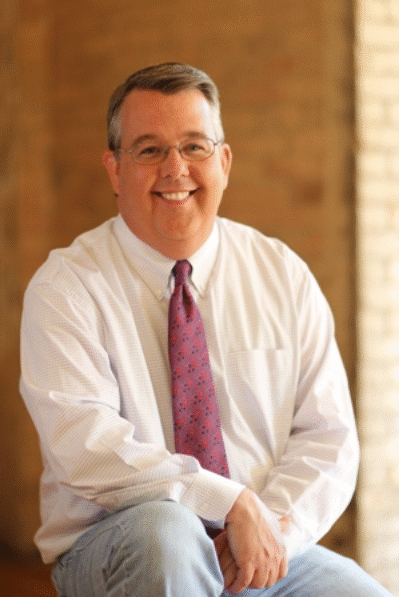 Dan Kelleher, PG, CIPM is a consulting hydrogeologist and project manager focuses on the technical areas of quantitative hydrogeology (in porous and fractured media), geotechnical analysis of sedimentary sequences, aquifer testing, fractured rock hydrogeology, and predictive ground water modeling. Dan's business acumen promotes personal trust, integrity, and relentless QA/QC.
Dan Kelleher, PG, CIPM is a consulting hydrogeologist and project manager focuses on the technical areas of quantitative hydrogeology (in porous and fractured media), geotechnical analysis of sedimentary sequences, aquifer testing, fractured rock hydrogeology, and predictive ground water modeling. Dan's business acumen promotes personal trust, integrity, and relentless QA/QC.
Dan started his career at Waste Management Corporate Headquarters in Oak Brook, Illinois. His worked allowed him to test geologic concepts about sedimentary processes during large-scale excavation and fill design, environmental and geotechnical investigations, ground water monitoring system design.
Dan also leads specialized technical teams establishing best practices and teaching educational courses and webinars for geologists, engineers and environmental scientists. He and Tim Kemmis are the co-founders of Midwest GeoSciences Group which helps professionals to do better job of TAKING THE MYSTERY OUT OF THE SUBSURFACE. He and Tim believe in that tagline so strongly that they own it as a federally-registered trademark.
Midwest GeoSciences Group allows Dan to help people not only be better scientists and engineers, but become better people. It is a privilege to collaborate with people on a spectrum of topics ranging from field tool development to cutting-edge engineering advances to environmental regulation input. Dan is motivated by serving others in order to fulfill our human purpose and achieve responsible global stewardship.
Tim Kemmis, PhD, PG
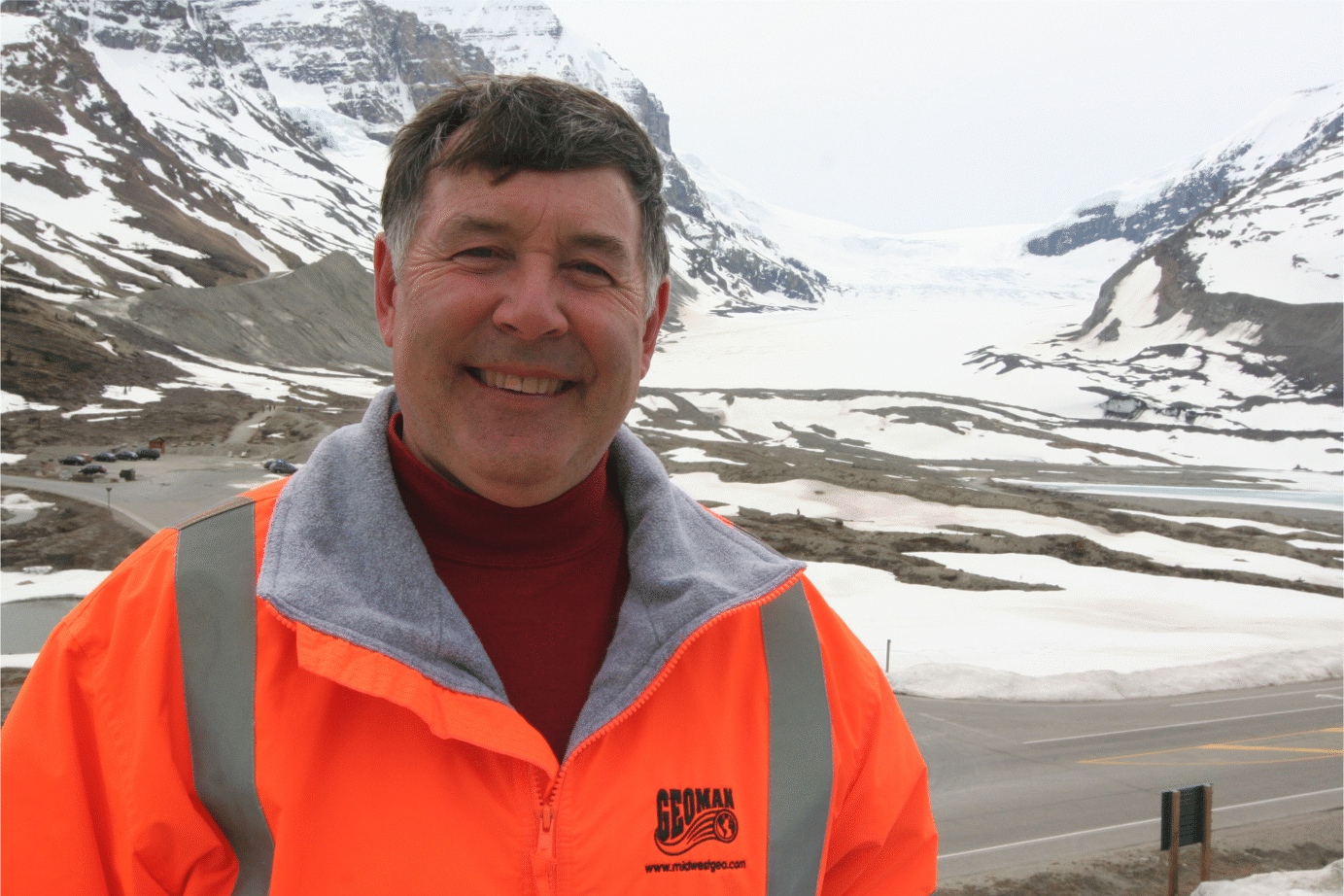 Tim Kemmis, PhD, PG is a Senior Hydrogeology Consultant and Project Manager for large-scale hydrogeologic investigations. His unique experience as both an applied researcher and consultant has enabled Tim to effectively teach staff at all levels how unravel sedimentary complexities by making fundamentally sound observations, preparing complete and accurate boring logs and confidently correlating geologic units.
Tim Kemmis, PhD, PG is a Senior Hydrogeology Consultant and Project Manager for large-scale hydrogeologic investigations. His unique experience as both an applied researcher and consultant has enabled Tim to effectively teach staff at all levels how unravel sedimentary complexities by making fundamentally sound observations, preparing complete and accurate boring logs and confidently correlating geologic units.
Tim received his bachelor's degree in agricultural soil science from the University of Illinois and his master's degree in glacial geology while working as a graduate assistant at the Illinois State Geological Survey.
He worked 14 years for the Iowa Geological Survey, during which he received his Ph.D., and where he:
- Carried out glacial sedimentologic investigations
- Remapped the Des Moines Glacial lobe
- Established the formal glacial stratigraphy for the lobe based on depositional environments
- Discovered a new type of hummocky glacial topography
- Determined the geometry and origin of jointing in glacial tills
- Developed a lithofacies code to decipher the history of glacial outwash and alluvial sequences
Tim is a co-founder of Midwest GeoSciences Group and has successfully taught many courses and webinars dedicated to improving boring logs and helping geologists think on their feet.
| Fee: |
249.00 USD Per Webinar
|
| |
You're SAVING $50 USD just for being a Member |
| Materials and Downloads: |
Session Slides (PDF)
Additional Materials- Correlation Exercise Hydrostratigraphy
- Hydrogeology of Glacial Deposits PROFICIENCY TEST
Record of Attendance Form (PDF)
|
Number of
Participants: |
AS OF JUNE 1, 2020, WEBINARS ARE PRICED FOR INDIVIDUALS WORKING ALONE. Pricing is discounted for individual registrations for people working alone.
|
Continuing
Education
Certificates: |
$14.95 each. Official CEU certificates are available as an option. After successful completion of this webinar, a link will be provided to order a certificate.
|
| Access: |
On-demand, anytime 24/7. |
| Discounts: |
Buy 3 on-demand webinars, and get 3 on-demand webinars for free!
|
| Duration: |
90 minutes |
| PDH Earned: |
1.5 hours |
| MA LSP: |
1.5 hours (MA LSP No. 1711) |
| CT LEP: |
1.5 hours (part of CT LEP-491E) |
| |
|
| Instructor(s): |
Dan Kelleher, PG, CIPM and Tim Kemmis, PhD, PG |